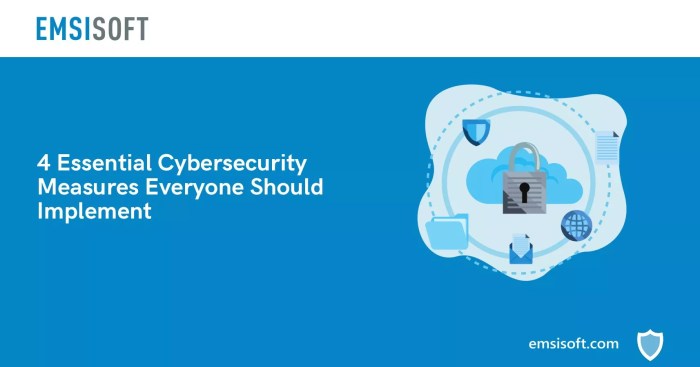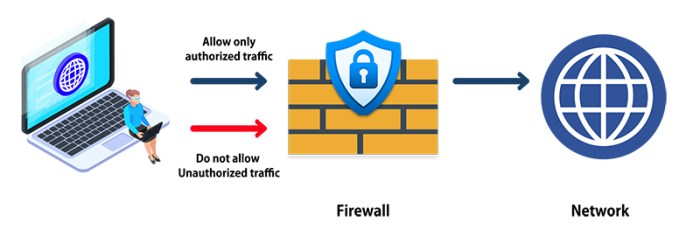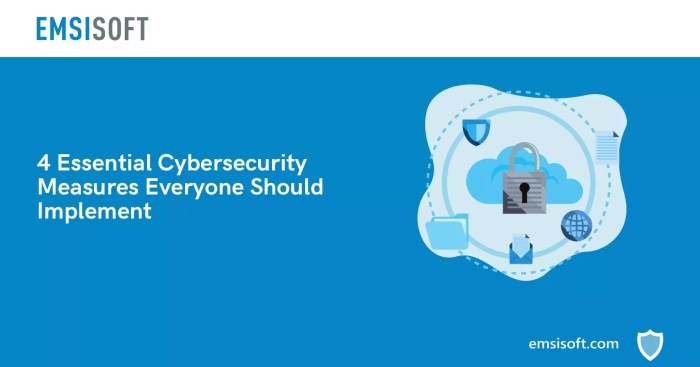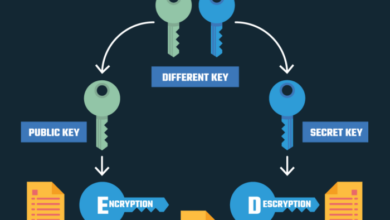
Advanced Threat Protection Solutions: Your Cybersecurity Shield
Advanced threat protection solutions are taking center stage in today’s rapidly evolving cyber landscape. These solutions are crucial for businesses of all sizes, offering a comprehensive defense against a wide range of sophisticated threats that traditional security measures might miss.
From zero-day exploits to ransomware and phishing attacks, advanced threats are becoming increasingly complex, demanding robust and proactive security measures.
Advanced threat protection solutions are designed to detect, prevent, and respond to these sophisticated threats. They leverage a combination of technologies and techniques, including endpoint detection and response (EDR), network security monitoring, security information and event management (SIEM), threat intelligence, and sandboxing, to provide a multi-layered defense.
These solutions go beyond traditional antivirus and firewall systems, offering a more proactive and intelligent approach to cybersecurity.
Key Components of ATP Solutions

Advanced Threat Protection (ATP) solutions are designed to combat increasingly sophisticated cyberattacks by going beyond traditional security measures. These solutions utilize a multi-layered approach, encompassing various technologies and functionalities to detect, prevent, and respond to advanced threats.
Endpoint Detection and Response (EDR)
EDR solutions provide comprehensive visibility and control over endpoints, which are often the primary targets of cyberattacks. They offer real-time monitoring, threat detection, and incident response capabilities.
- Real-time Monitoring: EDR solutions continuously monitor endpoint activity, identifying suspicious behaviors and potential threats. This includes tracking file changes, network connections, and process executions.
- Threat Detection: They use advanced analytics and machine learning algorithms to detect known and unknown threats. These solutions can identify malicious activity, including malware infections, exploits, and data exfiltration attempts.
- Incident Response: EDR solutions enable security teams to quickly investigate and respond to security incidents. They provide tools for isolating compromised endpoints, containing the spread of malware, and recovering from attacks.
Network Security Monitoring and Analysis
Network security monitoring and analysis solutions are crucial for identifying and mitigating threats that target network infrastructure. They provide visibility into network traffic, enabling security teams to detect suspicious activity and investigate potential breaches.
- Network Traffic Analysis: These solutions collect and analyze network traffic data, identifying patterns and anomalies that could indicate malicious activity. This includes monitoring for unusual communication patterns, port scans, and data exfiltration attempts.
- Threat Intelligence Integration: They integrate with threat intelligence feeds to correlate network activity with known threats and vulnerabilities. This allows security teams to proactively identify and block attacks based on intelligence gathered from external sources.
- Security Event Correlation: Network security monitoring solutions correlate network events with other security data sources, providing a holistic view of potential threats. This helps security teams identify coordinated attacks and understand the full scope of an incident.
Security Information and Event Management (SIEM)
SIEM solutions act as central hubs for collecting, analyzing, and correlating security data from various sources. They provide a comprehensive view of security events, enabling security teams to identify and respond to threats more effectively.
- Log Aggregation and Analysis: SIEM solutions collect security logs from various sources, including firewalls, intrusion detection systems, and endpoint security agents. They analyze these logs for suspicious patterns and correlate events across different systems.
- Threat Detection and Alerting: They use rules and correlation engines to detect threats based on predefined criteria or machine learning algorithms. SIEM solutions generate alerts when suspicious activity is detected, notifying security teams of potential incidents.
- Incident Response and Reporting: They provide tools for investigating security incidents, generating reports, and tracking security trends. SIEM solutions help security teams understand the root cause of incidents, identify vulnerabilities, and improve their security posture.
Threat Intelligence and Sandboxing
Threat intelligence and sandboxing solutions play a crucial role in identifying and analyzing unknown threats. They provide insights into emerging attack techniques and allow security teams to assess the potential risk of suspicious files and applications.
- Threat Intelligence Feeds: These solutions integrate with threat intelligence feeds, providing access to real-time information about known threats, vulnerabilities, and attack techniques. This enables security teams to proactively identify and mitigate potential risks.
- Sandboxing: Sandboxing environments isolate suspicious files and applications, allowing security teams to analyze their behavior in a controlled environment. This helps identify malware and other malicious activity without exposing the production network to risk.
- Threat Analysis and Reporting: Threat intelligence and sandboxing solutions provide detailed reports on the behavior of suspicious files and applications, enabling security teams to understand the nature of the threat and take appropriate action.
User and Entity Behavior Analytics (UEBA)
UEBA solutions focus on analyzing user and entity behavior patterns to detect anomalies that could indicate malicious activity. They use machine learning algorithms to establish baselines for normal behavior and identify deviations that could signal a potential threat.
- User Behavior Analysis: UEBA solutions monitor user activity, identifying unusual patterns that could indicate compromised accounts, insider threats, or data exfiltration attempts. This includes tracking user logins, access patterns, and data downloads.
- Entity Behavior Analysis: They extend beyond user analysis to include the behavior of other entities, such as devices, applications, and network traffic. This allows for a more comprehensive view of potential threats and anomalies.
- Threat Detection and Alerting: UEBA solutions generate alerts when they detect significant deviations from established baselines. These alerts provide security teams with early warnings of potential threats, enabling them to investigate and respond quickly.
Benefits of Implementing ATP Solutions: Advanced Threat Protection Solutions

In today’s digital landscape, where cyber threats are becoming increasingly sophisticated, organizations of all sizes must prioritize robust security measures. Advanced Threat Protection (ATP) solutions offer a comprehensive approach to safeguarding against a wide range of cyberattacks. By implementing ATP solutions, organizations can significantly enhance their security posture, improve threat detection and prevention capabilities, and minimize the impact of attacks.
Enhanced Threat Detection and Prevention
ATP solutions employ a multi-layered approach to detect and prevent threats, leveraging advanced technologies like machine learning, behavioral analysis, and threat intelligence. This allows organizations to identify and neutralize threats that traditional security solutions might miss.
- Real-time Threat Detection:ATP solutions continuously monitor network traffic and user activity for suspicious patterns, enabling the identification of threats in real time. For example, ATP solutions can detect and block malicious files, phishing attempts, and zero-day exploits, which are often difficult for traditional security solutions to identify.
- Sandboxing:ATP solutions can isolate suspicious files in a sandbox environment to analyze their behavior before they can execute on the network. This allows organizations to identify and neutralize threats that may not be detected by traditional antivirus software. For example, a file downloaded from an unknown source can be analyzed in a sandbox environment to determine if it contains malicious code.
- Behavioral Analysis:ATP solutions use behavioral analysis to detect deviations from normal user activity, which can indicate a potential attack. For example, an ATP solution might detect a user attempting to access sensitive data outside of their authorized hours, indicating a possible unauthorized access attempt.
Improved Incident Response Times and Reduced Impact of Attacks
By providing early threat detection and comprehensive visibility into security events, ATP solutions help organizations respond to incidents more effectively and minimize the impact of attacks.
- Automated Threat Response:ATP solutions can automatically block or quarantine threats, minimizing the time it takes to contain an attack. For example, an ATP solution can automatically block a malicious IP address from accessing the network, preventing further attacks.
- Centralized Security Management:ATP solutions provide a centralized platform for managing security policies and monitoring security events, simplifying incident response and improving communication between security teams. For example, security teams can quickly access detailed information about a security event from a centralized console, enabling faster and more informed decision-making.
- Enhanced Forensics Capabilities:ATP solutions capture detailed logs and event data, providing valuable information for post-incident analysis and forensic investigations. For example, ATP solutions can record the source and destination of network traffic, user activity, and file modifications, providing valuable insights into the nature and scope of an attack.
Strengthened Overall Security Posture and Compliance with Industry Standards
By implementing ATP solutions, organizations can strengthen their overall security posture, comply with industry standards, and demonstrate their commitment to data security.
- Comprehensive Security Coverage:ATP solutions provide a comprehensive approach to security, covering a wide range of threats and attack vectors. This helps organizations protect their critical assets and data from a variety of threats, including malware, phishing, ransomware, and zero-day exploits.
- Improved Security Posture:By proactively identifying and mitigating threats, ATP solutions help organizations improve their overall security posture and reduce their vulnerability to attacks. This can help organizations build a stronger reputation for data security and maintain the trust of their customers and partners.
- Compliance with Industry Standards:ATP solutions can help organizations meet industry standards and regulations, such as PCI DSS, HIPAA, and GDPR, by providing the necessary security controls and documentation. This can help organizations avoid fines and penalties and demonstrate their commitment to data privacy and security.
Reduced Risk of Data Breaches and Financial Losses
By preventing attacks and minimizing the impact of incidents, ATP solutions help organizations reduce the risk of data breaches and financial losses.
- Reduced Likelihood of Data Breaches:By proactively identifying and mitigating threats, ATP solutions can significantly reduce the likelihood of data breaches. This can help organizations protect sensitive data and avoid the reputational damage and financial losses associated with data breaches.
- Minimized Downtime:ATP solutions can help minimize downtime by quickly identifying and containing threats. This can help organizations avoid disruptions to business operations and minimize the impact of attacks on their bottom line.
- Reduced Costs of Security Incidents:By preventing attacks and minimizing the impact of incidents, ATP solutions can help organizations reduce the costs associated with security incidents, including remediation costs, legal fees, and reputational damage.
Choosing the Right ATP Solution
Selecting the appropriate Advanced Threat Protection (ATP) solution is crucial for organizations of all sizes. This decision should be based on a thorough evaluation of your specific needs and a clear understanding of the available options.
Factors to Consider When Selecting an ATP Solution
The choice of an ATP solution should align with your organization’s unique requirements. Here are some key factors to consider:
Organization Size and Industry
The size and industry of your organization play a significant role in determining your security needs. Smaller organizations might require a less complex and cost-effective solution, while larger enterprises with extensive IT infrastructure and sensitive data require a comprehensive and scalable solution.
Security Requirements and Threat Landscape
A thorough assessment of your security requirements and the threat landscape is essential. Consider the types of threats you are most vulnerable to, such as malware, phishing, ransomware, or insider threats. Identify the specific security features and functionalities that are essential to mitigate these threats.
Integration with Existing Security Infrastructure
The ATP solution should seamlessly integrate with your existing security infrastructure, such as firewalls, intrusion detection systems (IDS), and endpoint security software. This ensures compatibility and reduces the risk of conflicts or redundancies.
Budget and Return on Investment (ROI)
Budget constraints are a major factor in selecting an ATP solution. Consider the cost of the solution, including implementation, maintenance, and ongoing support. Evaluate the potential return on investment (ROI) by considering the cost savings from reduced security incidents, improved productivity, and enhanced data protection.
Evaluating and Selecting the Best ATP Solution
A systematic approach to evaluating and selecting the best ATP solution involves the following steps:
1. Define Your Security Needs
Begin by defining your specific security needs. Identify the types of threats you are most vulnerable to, the critical data assets you need to protect, and the level of security coverage you require.
2. Research and Evaluate ATP Solutions
Research different ATP solutions available in the market. Consider their features, functionalities, pricing models, and customer reviews. Shortlist a few solutions that best meet your requirements.
3. Conduct Proof of Concept (POC)
Conduct a proof of concept (POC) to evaluate the shortlisted solutions in a real-world environment. This allows you to test the effectiveness of the solution, assess its integration with your existing infrastructure, and evaluate its usability.
4. Negotiate and Secure Agreements
Once you have selected the best solution, negotiate the terms of the agreement, including pricing, support, and service level agreements (SLAs). Ensure that the agreement clearly Artikels the responsibilities of both parties.
5. Implement and Monitor the Solution
Implement the chosen ATP solution and monitor its performance. Regularly review the solution’s effectiveness, update its configuration as needed, and ensure it remains effective against emerging threats.
Implementing and Managing ATP Solutions

Successfully implementing and managing advanced threat protection (ATP) solutions requires a strategic approach that considers both technical and operational aspects. It involves careful planning, deployment, integration, ongoing monitoring, and continuous improvement to ensure the effectiveness of your security posture.
Deployment and Configuration of ATP Technologies, Advanced threat protection solutions
Deploying and configuring ATP technologies is a critical step in implementing a robust security framework. It involves selecting the right tools, customizing them for your specific environment, and ensuring seamless integration with your existing security infrastructure.
- Choose the Right ATP Technologies:Select solutions that align with your organization’s specific needs and security requirements. Consider factors like the type of threats you face, the size of your organization, and your budget.
- Customizing ATP Technologies:Once you’ve chosen your ATP solutions, you need to configure them to meet your specific security needs. This involves defining policies, rules, and thresholds for detecting and responding to threats.
- Integrate with Existing Security Tools:Seamless integration with your existing security tools is crucial for a holistic security approach. This allows for sharing of threat intelligence and automating responses.
- Ensure Proper Deployment:Deploy your ATP solutions according to best practices and security guidelines. This ensures that they are effective and secure.
Integration with Existing Security Tools and Processes
Integrating ATP solutions with existing security tools and processes is essential for building a comprehensive security ecosystem. It enables information sharing, automation, and improved threat detection and response capabilities.
- Data Sharing and Correlation:Integrate ATP solutions with your existing security information and event management (SIEM) systems to correlate threat data and identify potential attacks.
- Automated Response and Remediation:Automate security responses by integrating ATP solutions with your security orchestration, automation, and response (SOAR) platform. This allows for quicker and more efficient threat containment.
- Streamlined Threat Intelligence:Integrate ATP solutions with threat intelligence platforms to enrich threat detection and analysis capabilities.
Ongoing Monitoring, Analysis, and Response to Threats
Continuous monitoring, analysis, and response are crucial for maintaining a strong security posture. This involves actively tracking security events, analyzing threat data, and taking appropriate actions to mitigate risks.
- Real-Time Threat Monitoring:Monitor your network and endpoints for suspicious activity in real-time. This allows for early detection of threats and rapid response.
- Threat Analysis and Investigation:Analyze threat data to identify the nature, origin, and impact of attacks. This helps in understanding the threat landscape and developing appropriate mitigation strategies.
- Incident Response and Remediation:Develop and implement incident response plans to effectively contain and remediate threats. This includes isolating affected systems, removing malware, and restoring compromised data.
Regular Security Assessments and Updates
Regular security assessments and updates are essential for maintaining the effectiveness of your ATP solutions. This involves identifying vulnerabilities, patching security holes, and staying up-to-date with the latest threats and mitigation strategies.
- Vulnerability Scanning and Penetration Testing:Regularly assess your security posture by conducting vulnerability scans and penetration testing. This helps identify weaknesses in your systems and applications.
- Security Patching and Updates:Apply security patches and updates to your ATP solutions and other security tools regularly. This helps mitigate known vulnerabilities and improve the effectiveness of your security controls.
- Threat Intelligence Updates:Stay up-to-date with the latest threat intelligence by subscribing to threat feeds and monitoring security research. This allows you to adapt your security controls to emerging threats.







